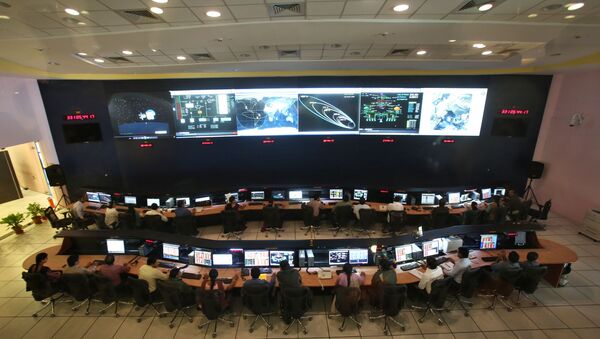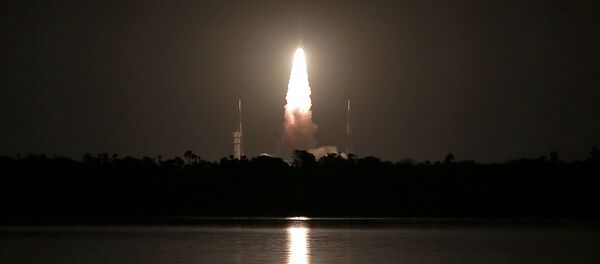New Delhi (Sputnik): India's second lunar mission, Chandrayaan-2 will be carrying a payload from US space agency NASA, the Indian Space Research Organisation (ISRO) has revealed. Chandrayaan-2 will have a total of 14 payloads, 13 of them will be Indian payloads while one will be from NASA. The American payload will be a "passive" one.
READ MORE: India Launches Military Surveillance Satellite to Track Enemy Radar (VIDEO)
#ISROmissions
— ISRO (@isro) May 15, 2019
Take a look at the challenging #Chandrayaan2 mission, a sequel to the successful #Chandrayaan1.
#Chandrayaan2 will carry 13 Indian Payloads and one passive experiment from NASA.
Stay tuned for more updates. pic.twitter.com/OjoQjV4saM
In contrast, the earlier Chandrayaan-1 had 11 payloads in total, 5 from India, 3 from Europe, 2 from the US and 1 from Bulgaria.
ISRO has provided a brief on the mission's various modalities, ranging from the mission launch to lunar landing through a press communique.
"The Orbiter and Lander modules will be interfaced mechanically and stacked together as an integrated module and accommodated inside the GSLV MK-III launch vehicle. The Rover is housed inside the Lander", ISRO stated.
READ MORE: India Sets December 2021 Deadline for Maiden Manned Space Mission
The Orbiter propulsion module will be pressed into service once the GSLV MK-III has done its job and got the integrated module into earth-bound orbit after the launch.
"After launch into earth bound orbit by GSLV MK-III, the integrated module will reach Moon orbit using Orbiter propulsion module", ISRO added.
Once in lunar orbit, the Lander will separate and land somewhere close to the Moon's South Pole. Rover will then take over for doing mission-specific scientific experiments.
"Subsequently (on reaching lunar orbit), Lander will separate from the Orbiter and soft land at the predetermined site close to lunar South Pole. Further, the Rover will roll out for carrying out scientific experiments on the lunar surface. Instruments are also mounted on Lander and Orbiter for carrying out scientific experiments", ISRO further stated.





